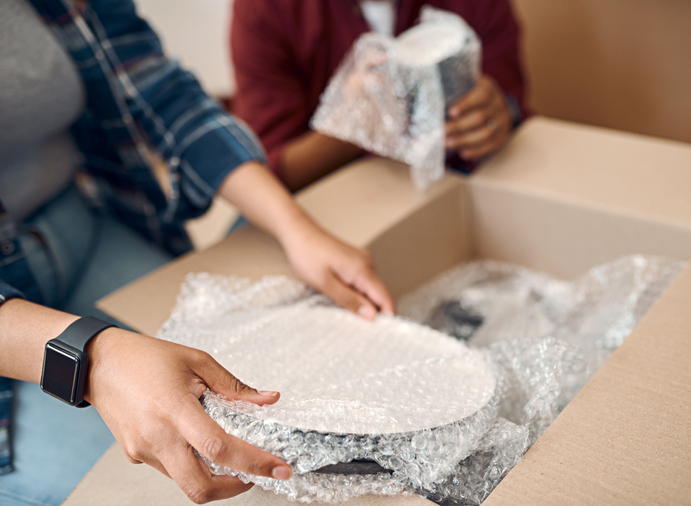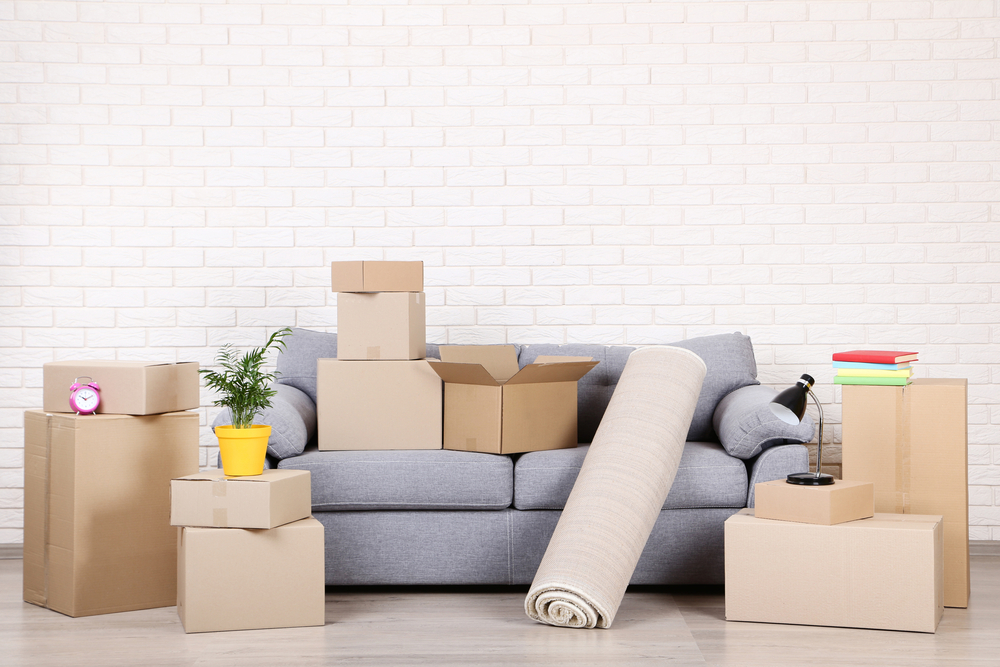Last Updated on 1 year by David Bergmann
One of the rooms that you use until the last minute before moving is the kitchen. Good preparation and strategic packing are important to ensure that packing the dishes and other kitchen equipment doesn’t end in chaos and stress during the hectic moving process. In the following article, you’ll find tips and tricks for moving your kitchen!
- Pack your kitchenware strategically
- Store dishes & glasses safely
- Transport your kitchen appliances safely
- Last but not least: Packing food & leftovers
1. Pack your kitchenware strategically
Think about which items you use most often and pack these last. These include cutlery, glasses, plates and cooking pots.
On the other hand, there are certainly kitchen utensils that are rarely used or are not absolutely necessary for daily use, such as baking utensils, mixers, kitchen scales etc.. You can store these in the moving boxes first.
Last but not least, you should start packing your food supplies. You can pack tinned food, pasta and all the things in the pantry a few days before the move. Fresh foods and everything stored in the fridge and freezer, you will probably only clear out and pack on the day of the move. You should make sure that the fridge in your new home is already switched on and working before you move in.
2. Store dishes & glasses safely
Fragile items naturally need to be particularly well protected during transportation. At the same time, kitchen utensils (especially porcelain plates, bowls and cups) can be very heavy, so it is important to use sturdy cardboard boxes with a reinforced base.
It is best to get special packaging material for dishes. These are usually plate boxes or glass boxes with separate inserts or intermediate compartments that protect against breakage. This allows you to transport your crockery quickly, easily and safely.
Another, somewhat more elaborate method is to wrap the dishes or glasses in bubble wrap, wrapping paper, tissue paper or simply newspaper. Tea towels and hand towels are also very suitable as an intermediate layer.
It is best to pack plates in so-called packages by tying about 3-5 plates into a package and securing them with a string or adhesive tape. This will prevent them from slipping during transportation.
To pack glass in break-proof packaging, you should wrap all glasses and cups individually in wrapping paper or newspaper that is thick enough to protect them from knocks. If possible, you should also wrap wine and champagne glasses in bubble wrap, as they are particularly fragile.
You should also wrap the cutlery (especially knives) well (e.g. with newspaper) and secure it with a rubber band. Make sure that you place the knives in the box and that the sharp tip does not point “upwards” towards the opening.
All cooking pots and pans must also be individually wrapped and stowed in the moving boxes. This is particularly important for coated (Teflon) ones, as they can scratch very easily.
3. Transport your kitchen appliances safely
If you still have the original packaging, this is of course the best option for transportation. In this way, the devices are packed individually and cannot bump into each other when being carried or transported in the car.

Alternatively, you can of course transport your kitchen appliances (toaster, blender, coffee machine, etc.) in moving boxes you have purchased. The best way to do this is to get bubble wrap and adhesive tape and wrap all devices and their components individually. Kitchen appliances can also be quite heavy, so you should also make sure that the base of the boxes is reinforced.
When stacking in the moving boxes, you should place the heaviest items at the bottom and smaller, lighter ones at the top. Towels are ideal as an intermediate layer, as they protect the individual appliances from slipping and prevent them from rubbing against each other.
However you pack your food processors, you should always make sure that they are packed and stored in a dry and clean place. Never place the boxes on wet sidewalks or in the snow, as even small amounts of moisture can damage the appliances or lead to mold growth.
4. Last but not least: Packing food & leftovers
Ideally, you should use up all open or perishable food before moving. It’s better to refrain from bulk shopping in the weeks before the move so that you don’t have to transport an unnecessary amount of food to your new home.
If you do have leftovers, it is best to pack them in plastic dishes (e.g. Tupperware) and transport them in a shopping basket or (in summer) in a cool bag. You probably also have one or two shopping bags lying around at home that you can also use.
You can store all items from the pantry (cans, jars, etc.) in normal moving boxes (note: make sure the bottom is reinforced!), which you line with bubble wrap or towels. Open packaging (e.g. cereal boxes) should always be sealed with adhesive tape or a rubber band beforehand.
Tip: Depending on how tight your schedule is and when your apartment has to be handed over to the landlord, you may want to move the fridge. defrost a few days before moving. Defrosting can take a few hours and you should also be sure to clean the inside of the fridge/freezer before handing over your home.

Leave a Reply